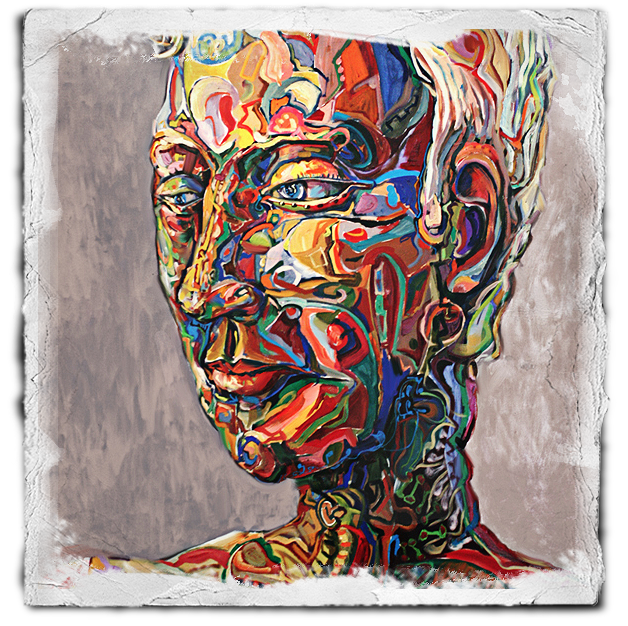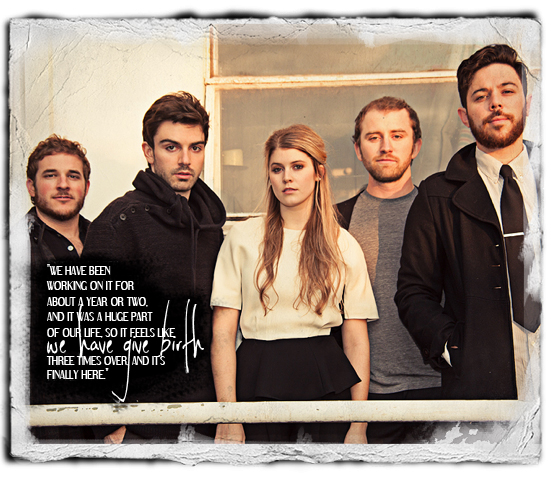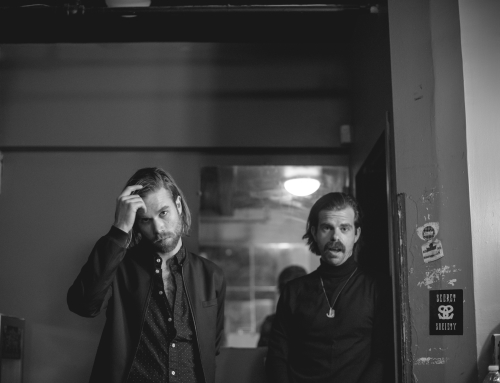Don’t be fooled by their stage-name, Milo Greene is anything but a singular force. The five members of the Los Angeles band are in fact a collective that have been making winds in the west coast music scene since long before their eponymous debut album dropped last month. Named after a fictional character the band created to act as their manager early in their career, Milo Greene had already been a guest on David Letterman, and invited to Lollapalooza, before their first studio release.
With a diverse but cohesive track list, the album has lived up to the hype. It oozes a cinematic aesthetic that is reflected in their sound, apparent in the impressive short film the band mastermind to project their melody. The film highlights the beauty of the setting they recorded in, and is a direct reflection of the creative force behind the album.
There’s something about the band’s methods that work to explain their pseudonym. Writing, playing and recording music as a unit, Milo Greene — the character — is a personification of the group as they exist as a whole. We spoke to one part of the whole, Robbie Arnett recently to learn more about the band’s unified front and the cinematic nature of their project.
How does it feel now that the album is finally released? Must have been especially stressful with all the hype around the band, and knowing you already had such a big following.
We are relieved…I think…to have it out. We have been working on it for about two and a half years, and it was a huge part of our life, so it feels like we have given birth three times over and it’s finally here. We are just really excited to share it with people, and actually have some music to give people.
I read that the album was written, and recorded in a very collective way. Tell me a bit about the unified force behind Milo Greene?
The four of us all came from separate bands, and we were all the singers and the leads of our individual bands, so when we came together, we were conscious about not having a focal point or lead singer. We wanted to have a harmony, bass and vocals. So when writing…it happens all different ways. Two of us or three of us or four of us will write something, or even one of us will bring something to the table. For “Autumn Tree,” which was the first song that we wrote, we were still in our other bands, and Andrew was living up in Sacramento, and I was in LA, and I had sent him some lyrics, and said ‘why don’t we try to experiment. Ill send you lyrics, and see if you can put some melodies over it.’ He sent that back, so we started going back and forth with melodies, and that’s kind of how that one happened. It’s just kind of a different process for each song on the record

Was there one song that anyone wrote alone, or is it pretty much always collective?
Its pretty much collective. I mean there are certain songs that individuals have brought, but for the most part someone might have an initial idea, but then it kind of blossoms when its brought to the four of us.
Being such a unit, what would you say inspires the group as a whole?
We are really inspired by film. When we first started talking about making music together, we wanted something that would possibly score films. That was our initial thought, we weren’t even thinking about being a band. It kind of just happened where it was like this works as a band, and I think we can get people together and make it happen. But we all kind of came together over favorite movies and the general scoring of films and sound tracking.
How do you think your passion for film plays into the album?
At first, everyone was asking how we categorize ourselves, and that’s the weirdest, hardest question to answer. And so we were just like: ‘it’s cinematic pop I guess’ because they are pop songs, and we like movies. We definitely have a cohesive thought to make a full album, rather than focusing on one or two really good songs. That’s why we decided to include little interludes and instrumentals, because we wanted it to flow together like a film.
Yeah, the cinematic, narrative feeling is really present in the recording…
We definitely had a film in mind, which is why when we finished the record, we had a month before we were leaving for tour, and we were like ‘we have to film a movie’, so we wrote a treatment and figured out how we were going to do it, and got it together. I had a friend who is a really cool director, and asked him if he’d be a part of it. We went up to a place where we recorded a lot of the music, and we just felt that was a perfect setting for the atmosphere and the vibe of the music. We thought that the scenery would translate really well for what we were trying to get across with the sound.
Is filming shorts like that — to the sound of Milo Greene — something you will continue to do?
I would love to do that, I think all of us would. We really have thought a lot about scoring and working with filmmakers, and making films ourselves. That is something that has always really interested us. I would like to continue that tradition and keep expanding from this. I mean this was a crew of three people, and us trying to get the actors together and really doing it, but I felt like for the inexperience that we have…we really put so much love into it…that it came out ok.
So is that the basis for having such diverse tracks and instrumentals on the album, showing off the spectrum of your talent and the music’s possible cinematic scope?
We kind of felt like we wanted to make as diverse of a record as we could, but still have an overrunning theme to it. So we thought that tying different songs together we could do instrumentals that could blend them a little better and different sounds. We started to experiment a lot with sounds, and carrying over from song to song so it kind of blended in and made it one seamless piece. I think if we just went from song to song with just vocals, it might have been lost, but with certain instrumentals you embrace those and kind of hop into another world, and get transcended into the next song. I think that is at least our hope, and was the idea behind including interludes or instrumentals on the record.
I think you achieved your vision, the transition from track to track is seamless. What about the song “Wooden Antlers,” how did you guys start off with that one? It has a really organic vibe.
That’s a funny one. We recorded all over the west coast, and that song was recorded in our managers house up in San Ynez, which is right by Santa Barbara in the mountains, and it’s really secluded. As we were driving up there, I was like ‘you know, I really want to set up all of the drums that we have, the toms, the kick drums and everything, and get something really fun going on with percussion, and getting something really rhythmic and rootsy.’ It was like midnight, we got up there. We just started banging on the toms, and came up with this rhythm, and got really weird and had a lot of fun with it, and we recorded it and it was like ‘oh, well, this is a cool vibe.’
Does the name come from that kind of its wild, natural origin?
As we were leaving the house, I was wearing a guitar. And it’s a really nice house that has all these kind of artifacts all around the house, and they had these old antlers on the wall, and I actually put my guitar on and moved to the door and it hit the antler, and it came down and broke. I was so embarrassed…it was horrible. And his family was there, they came at the end, and they were so sweet about it, but that was so embarrassing. So they were like, we are going to put this song on the record, and call it “Wooden Antlers.” That’s kind of where that name came from. It was super awkward and embarrassing.
Writer Amy Weinstein is co-founder of www.syncopatedsound.com. A fun-loving music fan herself, Syncopated Sound is dedicated to sharing the latest in upcoming shows and album releases, as well as featuring original interviews and editorials from a distinct perspective.













